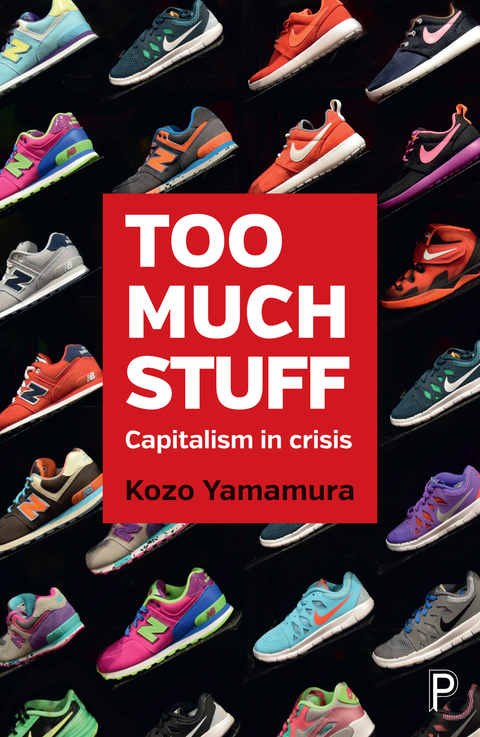Description
Efnisyfirlit
- Cover
- Title Page
- Copyright
- Contents
- Preface and acknowledgements
- ONE: A new perspective on capitalism’s “sickness”
- Introduction
- Capitalist economies: the realities
- Stagnation and its consequences
- A new world of necessary luxuries
- Necessary luxuries
- The failure of pro-investment policy
- Supply-side economics and “small government”
- Alternatives to supply-side economics
- We need a systemic change
- About this book
- TWO: Inspiration in the Kaufhaus des Westens
- The Kaufhaus des Westens
- “Necessary luxuries”
- Persistent lack of demand
- Changing demographic trends
- Unequal distribution of income
- Negative balance of trade
- Conclusion
- THREE: Unreal tax rates
- Introduction
- The US
- The lowest corporate tax rate in decades
- Japan
- Germany
- The downward trend in interest rates
- Liberal politicians and conservative fiscal policy
- Conclusion
- FOUR: Printing money
- Introduction
- Ultra-easy monetary policy
- The lack of a common macroeconomic theory
- Three Nobel laureates
- The Jackson Hole meeting of 2014
- Disagreement in the policy committees
- Neoclassical economic theory
- The ineffectiveness of ultra-easy monetary theory
- Currency depreciation
- The impact on emerging economies
- Asset price bubbles
- Negative interest rate policy
- The risk of falling government bond prices
- Difficulties of ending the policy
- Increasing disparity in the distribution of income and wealth
- Positive interest rate is indispensable lubricant
- The fallacy of composition: more price competition, less inflation
- Conclusion
- FIVE: Inequality and discontent
- Introduction
- The Occupy Movement
- Responses to Occupy
- Thomas Piketty and Capital in the 21st Century
- Disparity in income and wealth distribution
- The US
- Measuring disparity by the Gini coefficient
- Some statistics on income and wealth distribution
- Japan
- Declining permanent employment
- Germany
- Other developed economies
- Conclusion
- SIX: Buckling bridges and crumbling mountains
- Introduction
- Social safety nets and infrastructural investment
- The crumbling Eiger
- Nothing but a major global effort
- Effective policies on emissions
- The IPCC’s Fifth Assessment Report and the Paris Agreement of 2015
- Conclusion
- SEVEN: The United States: stagnation and gridlock
- From Ronald Reagan to George W. Bush, 1981-2009
- A brief history of technological change
- The Industrial Revolution
- The second wave of change
- The IT Revolution
- Stagflation in the late 1970s
- Small government
- The Great Recession
- Societal problems and ideological conflict
- The Obama years, 2009-16
- The Tea Party movement
- Obamacare
- Legislative gridlock
- A stagnating economy and unemployment
- Political paralysis
- Conclusion
- EIGHT: Japan: bubbles, “lost years” and Abenomics
- Introduction
- The bubble and the “lost” years, 1980-2008
- Ineffective government
- A stagnating economy
- Changing employment practice
- Government since 2009: from incompetent to delusional
- “Abenomics”
- The outcomes of Abenomics
- Other policies
- Conclusion
- NINE: Unified Germany: a divided nation
- Introduction
- 1980-2008: German politics move to the Right
- The consequences of unification
- Gerhard Schroeder and Agenda 2010
- Angela Merkel and the recovery of the sick man of Europe
- Rising inequality
- The Great Recession
- From 2009 to the present: the high cost of Merkel’s policies
- Recovery from the financial crisis
- “Energiewende”
- Voter discontent
- Further rising inequality
- Further challenges at home
- Conclusion
- TEN: Four European economies
- Introduction
- From the 1980s to 2008
- France
- The UK
- Italy
- Spain
- From 2009 to the present
- France
- The UK
- Italy
- Spain
- Conclusion
- ELEVEN: Reform to the rescue
- Great Britain
- The United States
- TWELVE: Adapting capitalism and changing politics
- Introduction
- Increasing tax revenues
- The US
- Japan and Germany
- Other taxes
- Wealth
- Luxuries
- Tobin tax
- Environmental taxes
- The expected public response
- Political change
- The US
- Japan
- Germany
- Can “big government” and democracy coexist?
- Quality and quantity in GDP growth
- THIRTEEN: Conclusion
- Postscript
- In the new world of too much stuff, you will be poorer than your parents
- Income and wealth distributions are still unequal and becoming more so.
- The real unemployment rate is not falling and wages are not rising
- The undesirable effects of printing money are proliferating
- Germany cannot continue fiscal austerity and its huge trade surplus
- The more things change, the more they remain the same
- Projected growth rates of the developed economies remain dismal
- Notes
- Chapter One
- Chapter Two
- Chapter Three
- Chapter Four
- Chapter Five
- Chapter Six
- Chapter Seven
- Chapter Eight
- Chapter Nine
- Chapter Ten
- Chapter Eleven
- Chapter Twelve
- Postscript







Reviews
There are no reviews yet.